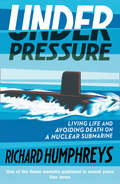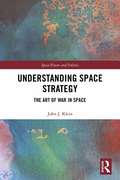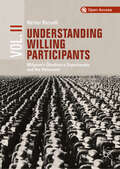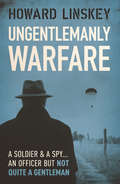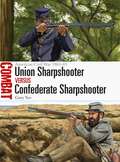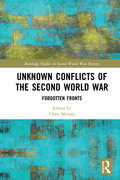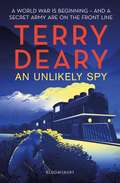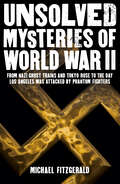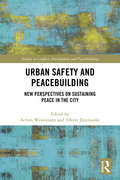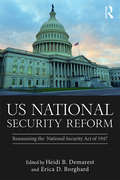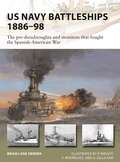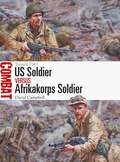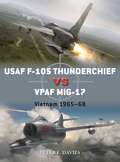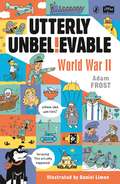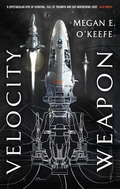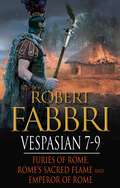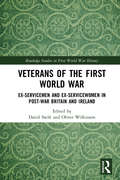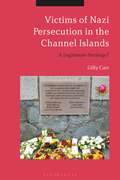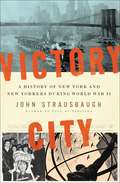- Table View
- List View
Under Pressure: Life On A Submarine
by Richard Humphreys‘One of the finest memoirs published in recent years.’ Dan Jones ‘An utterly fascinating and wonderfully detailed insight into the hidden world of the modern submarine.’ James Holland A candid, visceral, and incredibly entertaining account of what it’s like to live in one of the most extreme environments in the world.
Understanding Space Strategy: The Art of War in Space (Space Power and Politics)
by John J. KleinThis book examines the rise of great power competition in space, including the relevant and practical space strategies for China, Russia, the United States, and other countries. The work discusses the concepts and writings of past strategists, such as Thucydides, Sun Tzu, and Clausewitz, in relation to warfare initiated in or extending into space. This analysis underscores why polities initiate war based upon an assessment of fear, honor, and interest, and explains why this will also be true of war in space. Based upon the timeless strategic writings of the past, the book uncovers the strategy of space warfare, along with the concepts of deterrence, dissuasion, and the inherent right of self-defense, and outlines strategies for great, medium, and emerging space powers. Additionally, it highlights changes needed to space strategy based upon the Law of Armed Conflict, norms of behavior, and Rules of Engagement. The work also examines advancements and emerging trends in the commercial space sector, as well as what these changes mean for the implementation of a practical space strategy. Given the rise of great power competition in space, this work presents a space strategy based upon historical experience. This book will be of much interest to students of space policy, strategic studies, and International Relations.
Understanding Space Strategy: The Art of War in Space (Space Power and Politics)
by John J. KleinThis book examines the rise of great power competition in space, including the relevant and practical space strategies for China, Russia, the United States, and other countries. The work discusses the concepts and writings of past strategists, such as Thucydides, Sun Tzu, and Clausewitz, in relation to warfare initiated in or extending into space. This analysis underscores why polities initiate war based upon an assessment of fear, honor, and interest, and explains why this will also be true of war in space. Based upon the timeless strategic writings of the past, the book uncovers the strategy of space warfare, along with the concepts of deterrence, dissuasion, and the inherent right of self-defense, and outlines strategies for great, medium, and emerging space powers. Additionally, it highlights changes needed to space strategy based upon the Law of Armed Conflict, norms of behavior, and Rules of Engagement. The work also examines advancements and emerging trends in the commercial space sector, as well as what these changes mean for the implementation of a practical space strategy. Given the rise of great power competition in space, this work presents a space strategy based upon historical experience. This book will be of much interest to students of space policy, strategic studies, and International Relations.
Understanding Willing Participants, Volume 2: Milgram’s Obedience Experiments and the Holocaust
by Nestar RussellHorrified by the Holocaust, social psychologist Stanley Milgram wondered if he could recreate the Holocaust in the laboratory setting. Unabated for more than half a century, his (in)famous results have continued to intrigue scholars. Based on unpublished archival data from Milgram’s personal collection, volume one of this two-volume set introduces readers to a behind the scenes account showing how during Milgram’s unpublished pilot studies he step-by-step invented his official experimental procedure—how he gradually learnt to transform most ordinary people into willing inflictors of harm. The open access volume two then illustrates how certain innovators within the Nazi regime used the very same Milgram-like learning techniques that with increasing effectiveness gradually enabled them to also transform most ordinary people into increasingly capable executioners of other men, women, and children. Volume two effectively attempts to capture how step-by-step these Nazi innovators attempted to transform the Führer’s wish of a Jewish-free Europe into a frightening reality. By the books’ end the reader will gain an insight into how the seemingly undoable can become increasingly doable.
Ungentlemanly Warfare
by Howard LinskeyA soldier and a spy, an officer but not quite a gentleman, Captain Harry Walsh is SOE's secret weapon.Loathed by his own commanding officer, haunted by the death of his closest friend and trapped in a loveless marriage, Harry Walsh is close to burn out when he is ordered to assassinate the man behind the ME 163 Komet, Hitler's miracle jet fighter. If Walsh fails, there is no prospect of allied victory in Europe.Harry Walsh is ruthless, unorthodox and ungentlemanly. He is about to wreak havoc...Ungentlemanly Warfare is a captivating historical thriller about a pivotal and dramatic event from the Second World War.Praise for Howard Linskey'One of the single most dramatic events of the Second World War, Linskey makes the mission of Jan Kubis and Joseph Gabcik impossible to put down' - Northern Echo'Linskey delivers a flawless feel for time and place, snappy down to earth dialect dialogue mixed in with unrelenting violence and pace' - Times'Howard Linskey is a powerhouse storyteller of exceptional skill. One of the best UK writers working today' - Steve Cavanagh
Union Sharpshooter vs Confederate Sharpshooter: American Civil War 1861–65 (Combat)
by Gary YeeDuring the American Civil War, the Union and the Confederacy both fielded units of sharpshooters. Sometimes equipped with firearms no better than those of their infantry brethren, they fought in a manner reminiscent of Napoleonic-era light infantry. Siege warfare placed a premium on marksmanship and the sharpshooter became indispensable as they could drive artillerymen from their guns. They could also become expert scouts and, for the Confederacy, impressive raiders – one raid netted almost 250 prisoners. Initially, Union marksmen enjoyed the upper hand, but as the Confederates began raising and training their own sharpshooters, they proved themselves as worthy opponents. In this study, Gary Yee, an expert in firearms of the period, assesses the role played by sharpshooters in three bloody clashes at the height of the American Civil War – the battle of Fredericksburg, the siege of Vicksburg, and the siege of Battery Wagner.
Unknown Conflicts of the Second World War: Forgotten Fronts (Routledge Studies in Second World War History)
by Chris MurrayUnknown Conflicts of the Second World War: Forgotten Fronts is a collection of chapters dealing with various overlooked aspects of the Second World War. The aim is to give greater depth and context to the war by introducing new stories about regions of the world and elements of the war rarely considered. These chapters represent new discussions on previously undeveloped narratives that help to expand our understanding of the interconnectedness of the war. It also provides an expanded view of the war as a mosaic of overlapping conflicts rather than a two-sided affair between massive alliance structures. The Second World War saw revolutions, civil wars, social upheaval, subversion, and major geopolitical policy shifts that do not fit neatly into the Allied vs. Axis 1939–1945 paradigm. This aim is to connect the unseen dots from around the globe that influenced the big turning points we think we know well but have really only a superficial understanding of and in so doing shed new light on the scope and influence of the war.
Unknown Conflicts of the Second World War: Forgotten Fronts (Routledge Studies in Second World War History)
by Chris MurrayUnknown Conflicts of the Second World War: Forgotten Fronts is a collection of chapters dealing with various overlooked aspects of the Second World War. The aim is to give greater depth and context to the war by introducing new stories about regions of the world and elements of the war rarely considered. These chapters represent new discussions on previously undeveloped narratives that help to expand our understanding of the interconnectedness of the war. It also provides an expanded view of the war as a mosaic of overlapping conflicts rather than a two-sided affair between massive alliance structures. The Second World War saw revolutions, civil wars, social upheaval, subversion, and major geopolitical policy shifts that do not fit neatly into the Allied vs. Axis 1939–1945 paradigm. This aim is to connect the unseen dots from around the globe that influenced the big turning points we think we know well but have really only a superficial understanding of and in so doing shed new light on the scope and influence of the war.
An Unlikely Spy
by Terry DearyThrilling historical adventure from Terry Deary, the 'outstanding children's non-fiction author of the 20th century' (Books For Keeps)This brand new, exciting adventure from bestselling Horrible Histories author Terry Deary brings the Second World War to life. Perfect for fans of Michael Morpurgo and John Boyne. World War II has begun. Brigit has been evacuated to Wales from her home near the aeroplane factories of Coventry. But when it's revealed that her father is German, Brigit runs away to join her mother in a very special training camp, where Churchill is building a secret army of spies and saboteurs known as the Special Operations Executive.Brigit and her mother soon find themselves on the front line in Nazi-occupied France, where they search for double agents and meet with danger at every turn in their efforts to support the French resistance. But no-one will suspect Brigit is a spy, will they? After all, who would suspect a child?Featuring characters from The Silver Hand, this page-turning adventure sheds new light on the Second World War and will have readers gripped from start to finish.
Unsolved Mysteries of World War II: From the Nazi Ghost Train and ‘Tokyo Rose’ to the day Los Angeles was attacked by Phantom Fighters
by Michael FitzGeraldDuring World War II, many deeply mysterious events took place in the fog and chaos of conflict. These were classified, hushed up and kept from the public eye, and yet with the recent opening of secret archives, new light has been shed on these strange circumstances. This brilliant book fills you in on these unsolved cases, teasing fact from fiction. Topics include: • The lost treasure of the Amber Room - a masterpiece made from 5,900 kg of amber which was supposedly spirited away to a secret location and never uncovered since. • The Man Who Never Was - a corpse dressed in military uniform, fitted out with fake documents who was deliberately allowed to fall into Nazi hands. His real identity is still disputed. • The murder of socialite and possible spy, Jane Horney. Her body was never discovered, and many believed she swapped identities with her friend and lookalike before her disappearance. Within these pages the reader will also discover the secrets of the Nazi Ghost Trains; the 17 British soldiers at Auschwitz; and 'the curse of Timur's Tomb'. These intriguing and often chilling conspiracies and subterfuges will leave you stunned.
Urban Safety and Peacebuilding: New Perspectives on Sustaining Peace in the City (Studies in Conflict, Development and Peacebuilding)
by Achim Wennmann Oliver JutersonkeThis volume draws together original research related to conceptual and practical advances at the interface of urban safety and peacebuilding. The book reflects the advances in urban safety and peacebuilding to help address the rapidly increasing risk of conflict and insecurity in cities. Specifically, it draws on contributions to the Technical Working Group on the Confluence of Urban Safety and Peacebuilding Practice, an informal expert network co-facilitated by the United Nations Office at Geneva, UN-Habitat’s Safer Cities Programme, and the Geneva Peacebuilding Platform. A focus on ‘sustaining peace’ serves as a framework for situating new policy responses against conflict, violence, and exclusion in the city, and for promoting a conversation across disciplinary and specialist silos. The volume thereby broadens the optic of peacebuilding practice beyond interstate and intrastate armed conflicts – and especially their aftermath – and reconnects it to the community-level origins of building peace. The analysis and practice presented here will remind those willing to work towards peaceful and inclusive cities that there are tried and tested approaches available, and a host of experts and practitioners ready to accompany those prepared to lead in their respective contexts. This book will be of interest to students and researchers in the fields of peacebuilding, urban studies, security studies, and international relations.
Urban Safety and Peacebuilding: New Perspectives on Sustaining Peace in the City (Studies in Conflict, Development and Peacebuilding)
by Achim Wennmann Oliver JütersonkeThis volume draws together original research related to conceptual and practical advances at the interface of urban safety and peacebuilding. The book reflects the advances in urban safety and peacebuilding to help address the rapidly increasing risk of conflict and insecurity in cities. Specifically, it draws on contributions to the Technical Working Group on the Confluence of Urban Safety and Peacebuilding Practice, an informal expert network co-facilitated by the United Nations Office at Geneva, UN-Habitat’s Safer Cities Programme, and the Geneva Peacebuilding Platform. A focus on ‘sustaining peace’ serves as a framework for situating new policy responses against conflict, violence, and exclusion in the city, and for promoting a conversation across disciplinary and specialist silos. The volume thereby broadens the optic of peacebuilding practice beyond interstate and intrastate armed conflicts – and especially their aftermath – and reconnects it to the community-level origins of building peace. The analysis and practice presented here will remind those willing to work towards peaceful and inclusive cities that there are tried and tested approaches available, and a host of experts and practitioners ready to accompany those prepared to lead in their respective contexts. This book will be of interest to students and researchers in the fields of peacebuilding, urban studies, security studies, and international relations.
US National Security Reform: Reassessing the National Security Act of 1947 (Routledge Global Security Studies)
by Heidi B. Demarest Erica D. BorghardThis collection of essays considers the evolution of American institutions and processes for forming and implementing US national security policy, and offers diverse policy prescriptions for reform to confront an evolving and uncertain security environment. Twelve renowned scholars and practitioners of US national security policy take up the question of whether the national security institutions we have are the ones we need to confront an uncertain future. Topics include a characterization of future threats to national security, organizational structure and leadership of national security bureaucracies, the role of the US Congress in national security policy making and oversight, and the importance of strategic planning within the national security enterprise. The book concludes with concrete recommendations for policy makers, most of which can be accomplished under the existing and enduring National Security Act. This book will be of much interest to students of US national security, US foreign policy, Cold War studies, public policy and Internationl Relations in general.
US National Security Reform: Reassessing the National Security Act of 1947 (Routledge Global Security Studies)
by Heidi B. Demarest Erica D. BorghardThis collection of essays considers the evolution of American institutions and processes for forming and implementing US national security policy, and offers diverse policy prescriptions for reform to confront an evolving and uncertain security environment. Twelve renowned scholars and practitioners of US national security policy take up the question of whether the national security institutions we have are the ones we need to confront an uncertain future. Topics include a characterization of future threats to national security, organizational structure and leadership of national security bureaucracies, the role of the US Congress in national security policy making and oversight, and the importance of strategic planning within the national security enterprise. The book concludes with concrete recommendations for policy makers, most of which can be accomplished under the existing and enduring National Security Act. This book will be of much interest to students of US national security, US foreign policy, Cold War studies, public policy and Internationl Relations in general.
US Navy Battleships 1886–98: The pre-dreadnoughts and monitors that fought the Spanish-American War (New Vanguard)
by Brian Lane HerderAfter the American Civil War, the US Navy had been allowed to decay into complete insignificance, yet the commissioning of the modern Brazilian battleship Riachuelo and poor performance against the contemporary Spanish fleet, forced the US out of its isolationist posture towards battleships. The first true US battleships began with the experimental Maine and Texas, followed by the three-ship Indiana class, and the Iowa class, which incorporated lessons from the previous ships. These initial ships set the enduring US battleship standard of being heavily armed and armoured at the expense of speed. This fully illustrated study examines these first six US battleships, a story of political compromises, clean sheet designs, operational experience, and experimental improvements. These ships directly inspired the creation of an embryonic American military-industrial complex, enabled a permanent outward-looking shift in American foreign policy and laid the foundations of the modern US Navy.
US Soldier vs Afrikakorps Soldier: Tunisia 1943 (Combat)
by David CampbellOperation Torch, launched on 8 November 1942, landed Anglo-American forces in Vichy-controlled Morocco and Algeria to create a second front against the Axis forces in North Africa, catching Rommel's German and Italian forces in the claws of a giant pincer. The US Army was powerfully well armoured and equipped, but fresh to war, and it showed. Organization suffered from a surfeit of peacetime theories and training was insufficient and ill-applied. Despite such failings the US GIs and their commanders learned very quickly, adapting to German tactics and the realities of mechanized warfare. The Axis forces in North Africa were seasoned by years of fighting against increasingly powerful British and Commonwealth forces, and were led by one of the Reich's most capable generals. The German doctrine of mechanized warfare had proved itself time and again, but ever-growing logistical and supply problems were blunting its effectiveness. From Sidi Bou Zid to El Guettar, this fully illustrated study pits the US Army against the best that the Axis forces in Africa had to offer.
USAF F-105 Thunderchief vs VPAF MiG-17: Vietnam 1965–68 (Duel #95)
by Peter E. DaviesThe F-105D Thunderchief was originally designed as a low-altitude nuclear strike aircraft, but the outbreak of the Vietnam War led to it being used instead as the USAF's primary conventional striker against the exceptionally well-defended targets in North Vietnam and Laos. F-105 crews conducted long-distance missions from bases in Thailand, refuelling in flight several times and carrying heavy external bombloads.The MiG-17 was the lightweight, highly manoeuvrable defending fighter it encountered most often in 1965–68 during Operation Rolling Thunder. A development of the MiG-15, which shocked UN forces during the Korean War, its emphasis was on simplicity and ease of maintenance in potentially primitive conditions.Fully illustrated with stunning artwork, this book shows how these two aircraft, totally different in design and purpose, fought in a series of duels that cost both sides dearly.
Utterly Unbelievable: World War Ii
by Adam FrostPrepare to discover the most utterly unbelievable REAL facts about WWII . . . Did you know that onions were given as birthday presents in WWII? Or that exploding camel dung was used as a weapon? Could a leaky toilet force a submarine crew to abandon ship?This is history like you've never known it before! Ask yourself . . .Would you eat squirrel tail soup, cow's udders, or a carrot on a stick? Could you share 12.7cm of bathwater with your WHOLE family - for your weekly wash? If you were a spy, which gadgets and inventions would you choose?From flying tanks to Operation Toenail, read about the daring, tragic and heroic events that shaped one of the most influential conflicts in modern times. With a bold design and colourful illustrations, picture the most amazing, and unbelievable, facts from this world-changing time.Puffin and IWM (Imperial War Museums) are proud to be working together to educate and inspire young readers with tales from the past. Puffin know that stories can take you anywhere. As one of the most beloved children's publishers, we aim to fire every young imagination. Uncovering people's experiences during wartime, from the First World War to the present day, IWM is a family of five museums (IWM London, Churchill War Rooms, HMS Belfast, IWM North, and IWM Duxford).
Velocity Weapon (The Protectorate)
by Megan E. O'Keefe'A brilliantly plotted yarn of survival and far-future political intrigue' Guardian The last thing Sanda remembers is her gunship exploding.She expected to be recovered by salvage-medics and to awaken in friendly hands, patched-up and ready to rejoin the fight. Instead she wakes up 230 years later, on a deserted enemy starship called The Light of Berossus - or, as he prefers to call himself, 'Bero'.Bero tells Sanda the war is lost. That the entire star system is dead.But is that the full story? After all, in the vastness of space, anything is possible . . . Dazzling space battles, deadly galactic politics and rogue AI collide in Velocity Weapon, an epic space opera from award-winning author Megan E. O'Keefe.Praise for Velocity Weapon'Furious action sequences, funny dialogue, and a plot that will keep you guessing every step of the way' K. B. Wagers'Velocity Weapon is fast-paced, twisty, edge-of-your-seat fun. Space opera fans are in for a massive treat!' Marina J. Lostetter
Vespasian 7-9 (Vespasian Bundle)
by Robert FabbriBOOKS 7-9 IN THE VESPASIAN SERIESFuries of RomeAD 58: Rome is in turmoil once more. Emperor Nero has set his heart on a new wife but to clear a path for her, he must first assassinate his Empress, Claudia Octavia. Vespasian needs to tread carefully here - Nero's new lover, Poppaea Sabina, is no friend of his and her ascent to power spells danger. Meanwhile, Nero's extravagance has reached new heights, triggering a growing financial crisis in Britannia. Vespasian is sent to Londinium to rescue the situation, only to become embroiled in a deadly rebellion, one that threatens to destroy Britannia and de-stabilise the empire...Rome's Sacred FlameAD 63: Vespasian has been ordered to a far-flung empire in Africa to free five hundred Roman citizens who have been enslaved by a desert kingdom. But when Vespasian reaches the city, he discovers tensions spilling over into bloody chaos... Battling thirst and exhaustion, Vespasian must help the Romans escape, their only route to survival a desperate race across a barren desert with a hoard of heavily armed rebels at their backs. Meanwhile, back in Rome, its citizens fear for their lives as Emperor Nero's extravagance and unpredictable violence goes unchecked. Can anyone stop the Emperor before Rome devours itself? And if Nero is to be toppled, who will be the one to put his head in the lion's mouth?Emperor of RomeAD 68. Vespasian is tasked with the impossible. Should he quell the revolt in Judaea, as Nero the emperor has instructed, or resort to the unthinkable and sabotage his own campaign? If his conquest succeeds, he risks facing the mad emperor's jealousy. If he fails, his punishment will be severe. But then Nero commits suicide, catapulting Rome into turmoil. With a contested throne and an army at his disposal, now may finally be Vespasian's time - to ascend, to conquer, to achieve what countless prophecies have foretold and take control of Rome itself. Will Vespasian, at long last, be the one to wear the purple?______________________________________________Don't miss Robert Fabbri's epic new series Alexander's Legacy
Veterans of the First World War: Ex-Servicemen and Ex-Servicewomen in Post-War Britain and Ireland (Routledge Studies in First World War History)
by Oliver Wilkinson David SwiftThis volume synthesises the latest scholarship on First World War veterans in post-war Britain and Ireland, investigating the topic through its political, social and cultural dynamics. It examines the post-war experiences of those men and women who served and illuminates the nature of the post-war society for which service had been given. Complicating the homogenising tendency in existing scholarship it offers comparison of the experiences of veterans in different regions of Britain, including perspectives drawn from Ireland. Further nuance is offered by the assessment of the experiences of ex-servicewomen alongside those of ex-servicemen, such focus deeping understanding into the gendered specificities of post-war veteran activities and experiences. Moreover, case studies of specific cohorts of veterans are offered, including focus on disabled veterans and ex-prisoners of war. In these regards the collection offers vital updates to existing scholarship while bringing important new departures and challenges to the current interpretive frameworks of veteran experiences in post-war Britain and Ireland.
Veterans of the First World War: Ex-Servicemen and Ex-Servicewomen in Post-War Britain and Ireland (Routledge Studies in First World War History)
by Oliver Wilkinson David SwiftThis volume synthesises the latest scholarship on First World War veterans in post-war Britain and Ireland, investigating the topic through its political, social and cultural dynamics. It examines the post-war experiences of those men and women who served and illuminates the nature of the post-war society for which service had been given. Complicating the homogenising tendency in existing scholarship it offers comparison of the experiences of veterans in different regions of Britain, including perspectives drawn from Ireland. Further nuance is offered by the assessment of the experiences of ex-servicewomen alongside those of ex-servicemen, such focus deeping understanding into the gendered specificities of post-war veteran activities and experiences. Moreover, case studies of specific cohorts of veterans are offered, including focus on disabled veterans and ex-prisoners of war. In these regards the collection offers vital updates to existing scholarship while bringing important new departures and challenges to the current interpretive frameworks of veteran experiences in post-war Britain and Ireland.
Victims of Nazi Persecution in the Channel Islands: A Legitimate Heritage?
by Gilly CarrVictims of Nazi Persecution from the Channel Islands explores the fight and claims for recognition and legitimacy of those from the only part of the British Isles to be occupied during the Second World War. The struggle to have resistance recognised by the local governments of the islands as a legitimate course of action during the occupation is something that still continues today. Drawing on 100 compensation testimonies written in the 1960s and newly discovered archival material, Gilly Carr sheds light on the experiences of British civilians from the Channel Islands in Nazi prisons and concentration camps. She analyses the Foreign Office's treatment of claims from Islanders and explores why the islands' local governments declined to help former political prisoners fight for compensation. Finally, the book asks why 'perceived sensitivities' have stood in the way of honouring former political prisoners and resistance memory over the last 70 years in the Channel Islands.The testimonies explored within this volume help to place the Channel Islands back within European discourse on the Holocaust and the Second World War; as such, it will be of great importance to scholars interested in Nazi occupation, persecution and post-war memory both in Britain and Europe more widely.
Victory City: A History of New York and New Yorkers during World War II
by John StrausbaughFrom John Strausbaugh, author of City of Sedition and The Village, comes the definitive history of Gotham during the World War II era. New York City during World War II wasn't just a place of servicemen, politicians, heroes, G.I. Joes and Rosie the Riveters, but also of quislings and saboteurs; of Nazi, Fascist, and Communist sympathizers; of war protesters and conscientious objectors; of gangsters and hookers and profiteers; of latchkey kids and bobby-soxers, poets and painters, atomic scientists and atomic spies.While the war launched and leveled nations, spurred economic growth, and saw the rise and fall of global Fascism, New York City would eventually emerge as the new capital of the world. From the Gilded Age to VJ-Day, an array of fascinating New Yorkers rose to fame, from Mayor Fiorello La Guardia to Franklin and Eleanor Roosevelt, Langston Hughes to Joe Louis, to Robert Moses and Joe DiMaggio. In VICTORY CITY, John Strausbaugh returns to tell the story of New York City's war years with the same richness, depth, and nuance he brought to his previous books, City of Sedition and The Village, providing readers with a groundbreaking new look into the greatest city on earth during the most transformative -- and costliest -- war in human history.
Victory for the East End Angels: A nostalgic wartime saga about love and friendship during the Blitz (East End Angels)
by Rosie HendryThe war is almost over - and it's up to the East End Angels to keep the home fires burning!Frankie's fiance, a doctor, is away looking after the troops in Europe - will he return safely home?Winnie has a happy secret - but can she carry on at Station 75 when she's going to have a baby?Bella is intrigued by her new friend, a Polish airman. As the war ends and victory is in sight, what next for the girls of Station 75?A gorgeously uplifting saga for fans of Ellie Dean and Donna Douglas
